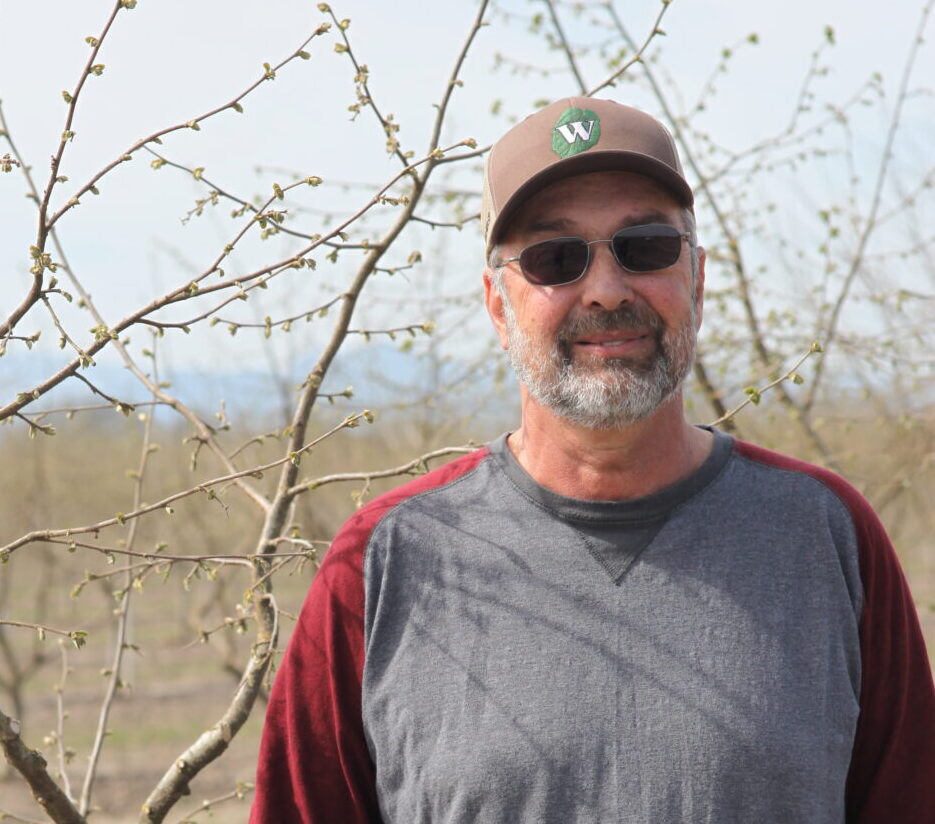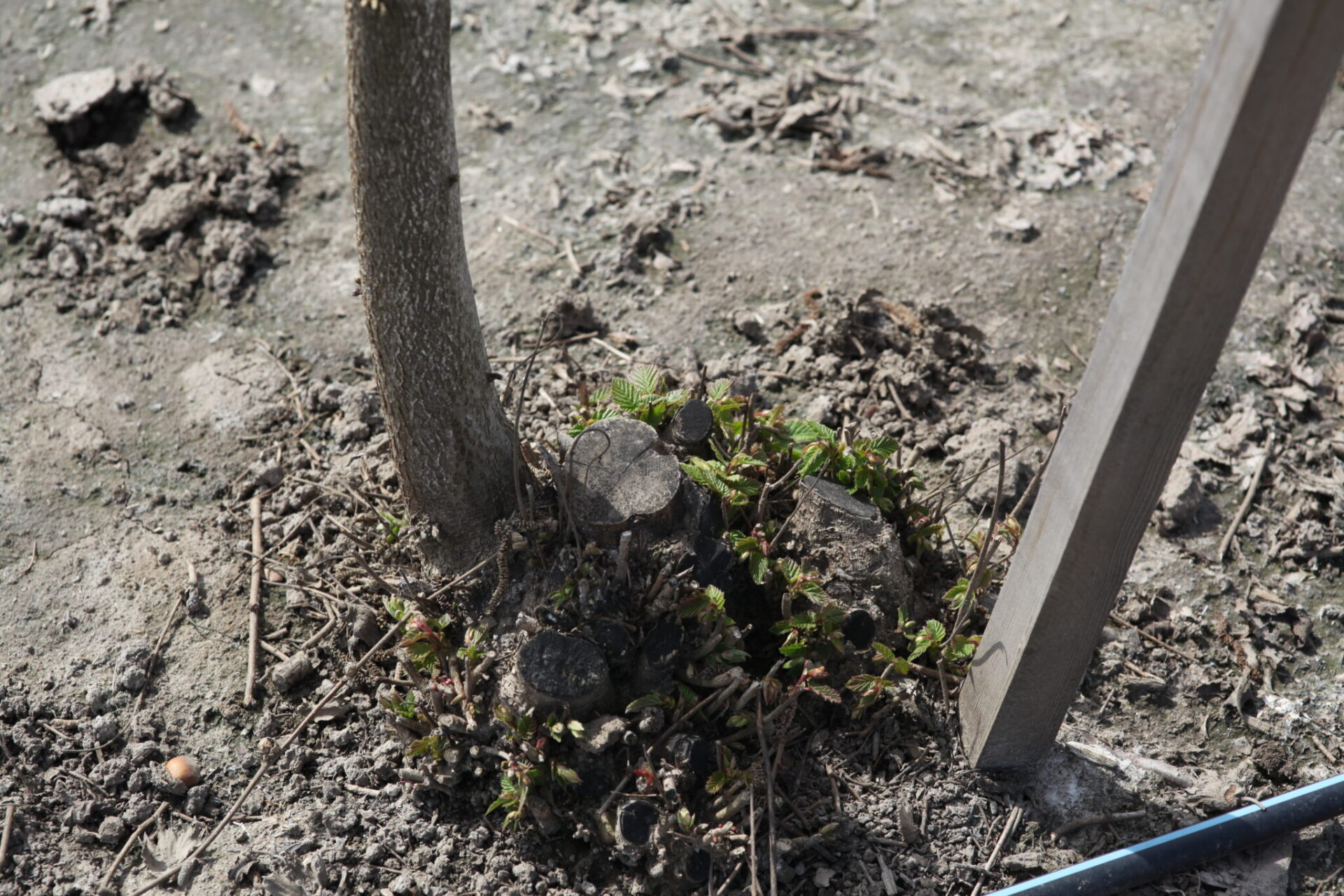Since man first began growing his own food, animals have made it a habit to help themselves to his crops. Controlling rodent and bird pests in hazelnut orchards is a constant battle.
Unfortunately, there is no quick and easy fix. Instead, it’s a long-term issue that requires constant vigilance to keep chewing, gnawing, nut-eating animal pest numbers in check.
Mice and Field Voles
Rodents are one of the most destructive mammal pests to hazelnut trees. Small but mightily damaging, mice and field voles (sometimes called field mice) tunnel around the base of trees and gnaw at the bark of trunks and roots. They damage or even girdle small trees. Mice and voles are especially drawn to young, vulnerable, newly planted trees with tender bark.
So what’s a grower to do?
Jeff Newton, farm manager of Crimson West/Christensen Farm in McMinnville, Ore., has tried all of the well-known methods to irradicate rodents.
“We bait ‘em, bird pole ‘em, keep the grass from around the trunks, keep the rows clean,” Newton said.
When mice or voles do girdle and kill young trees, Newton cuts out the main trunk and lets the suckers grow.
“Use suckers from the roots. Not side shoots from the trunk,” he said, noting that side shoots grow a weak tree.
Newton chooses three or four of the most promising suckers and prunes out all the rest. After the vigorous new suckers have grown for a while, he chooses the sturdiest one and trains it as a new, young tree. He removes the rest of the saved suckers.
Squirrels
For such a small animal, squirrels can pack away an amazing number of nuts. In orchards near a wooded border, Newton has seen the adjacent floor of orchard rows picked clean. In short order, too.
“I came back the next day and all the nuts were just gone,” he said.
Newton has spotted squirrels in the springtime sitting in the crotch of hazelnut trees stripping the bark and eating it. On closer inspection, he noticed those squirrels were all female and either pregnant or nursing young. Newton assumes they get essential minerals from the bark.
To keep the squirrel population in check, Newton uses traps. “Any kind of trap that will catch a squirrel,” he said. “I set the trap with a hazelnut. I know they like hazelnuts,” he added with a grin.
Red-Tailed Hawks as Day Hunters
Besides trapping, baiting and shooting varmints, growers can attract and utilize the hunting skills and appetites of birds of prey.
Red-tailed hawks, also known as chicken hawks in some parts of the country, are a beneficial addition to orchards. The biggest of the hawks, red tails weigh 2 to 4 pounds on average. Their plumage varies widely in color from one bird to the next, but most have a red-brown tail, which the sun beams through during flight. They have eight times better eyesight than humans. Like humans, they see in color. In addition, hawks see colors in the ultraviolet spectrum. Mouse and vole urine is phosphoresced and visible under an ultraviolet light. So, for hawks, rodent runs appear as lighted highway maps from above.
Hawks hunt in open spaces, often from a perch. The red-tailed hawk is one species that has benefitted from clear-cutting for agriculture, road building and power line maintenance.
The hawk’s diet is made up of 85% to 90% small rodents such as mice, voles, squirrels and gophers. But they also prey on other birds, including crows, jays and starlings, all of which gobble hazelnuts. Attracting red-tailed hawks to orchards could save growers hundreds of dollars a year in salvaged nuts and trees.
Newton has seen hawks using Christensen Farm’s bird poles, so the birds of prey are helping with rodent problems, even if they aren’t eating all of the pests.
Red-tailed hawks are the most common raptors to use high perches, which can be either tall trees along orchard edges or man-made bird poles. There are other birds of prey that will intermittently use poles, too, such as the red-shouldered hawk, Cooper’s hawk, merlin (pigeon hawk), American kestrel, white-tailed kite and great horned owl.
In the wild, red-tailed hawks have an average life span of 20 years, so if you can attract them, the parent birds and their offspring could stick around hunting pests in your orchard for decades.

Attracting Owls as Night Hunters
Besides erecting raptor poles for rodent control, Oregon State University also suggests installing owl nesting boxes to attract the night-hunting barn owl. It is a common owl species west of the Cascade mountain range.
Barn owls have a heart-shaped face, light, tawny feathers and a raucous cry. Like other birds of prey, they have sharp talons and excellent eyesight. Barn owls also have exceptional hearing. They swoop down silently on their prey and swallow it whole. Later the owls regurgitate a pellet made up of the hair and bones of their meal. The tell-tale pellets let you know owls are present in your orchard. Break open the pellets and see by the skulls inside what the owls are eating, most often rodents and starlings.
Barn owls readily nest in boxes if they are made to spec. Whether purchasing an owl box or making your own, keep the following in mind:
Size – Barn owls hatch many young at a time, seven is common. More is not uncommon. Offer a big enough box to accommodate many owls since they will reach full size while inside the nest box.
The box should be at least 24 inches deep, 18 inches high and 18 inches wide.
The entrance hole should be 5 to 5.5 inches. Owls want to be able to barely squeeze through. That way they are assured that larger predators, such as great-horned owls, cannot get in and attack their hatchlings.
Position entrance hole at least 6 inches off the floor of the box. This will prevent baby owls from tumbling out.
Paint outside of the box with white paint to reflect the sun and not overheat the owls inside.
Use 0.5-inch plywood for construction. Thicker plywood will last longer but will make a heavier, more unwieldy box to install.
Attach box to a pole, post or building 8 to 12 feet off the ground.
Face the entryway towards an open area.
Rodent Issues and Cover Crops
Cover crops have both positive and negative effects on hazelnuts.
“They’re good, they’re great. They have a lot of benefits,” Newton said. But, he adds, they can also cause problems.
Cover crops, especially grass, seem to attract mice and voles. When grass or weeds are left growing around the base of trees, the mice move in, set up house and start gnawing on the bark.
Taking out existing cover crops may also create problems.
“We took out the grass and the mice went ‘whoosh,’ right into the trees,” Newton said.
Irrigation can also draw mice.
“Mice moved in with nice, irrigated orchards,” Newton said. “I guess they like having a shower in their living room,” he joked.
Newton still plants some cover crops. For example, he drilled creeping red fescue seed in December. He uses cover crops primarily to prevent winter erosion.
















